- Encyclopedias

transporter (Star Trek)

The transporter is a device, first seen aboard the Starship Enterprise in the Star Trek original series, which made the concept of teleportation familiar to a wide audience. "Beam me up, Scotty" became one of the small screen's most oft-repeated lines (though trivia hunters will find that "Beam me up, Mr. Scott" is the closest the show actually came to that immortal line).
In the twenty-third century world of Kirk, Spock, and McCoy, shuttlecraft are used only in special circumstances when beaming someone's molecules around might prove a health hazard. But, ironically, the reason that Trek mastermind Gene Roddenberry chose to equip his starships with "transporters" had less to do with high-tech future possibilities than with low-tech Beatles-era reality. It wasn't feasible, in terms of budget or sixties-level special effects, to show convincingly a spacecraft landing on a different planet every week. Much easier to have a crewmembers shimmer out in one scene, then twinkle back an instant later someplace else. With realistic computer graphics still a couple of decades away, the effect called for plenty of ingenuity and homespun improvisation. The sparkling dematerialization and rematerialization sequences were created by dropping tiny bits of aluminum foil and aluminum perchlorate powder against a black sheet of cardboard, and photographing them illuminated from the side by a bright light. When the characters were filmed walking into the transporter, they stepped on to the pads, Kirk gave the order to energize – and the actors stepped off. In the studio lab, after the film was developed, the actors were superimposed fading out and the fluttering aluminum fading in, or vice versa. By 1994, when production started on the fourth TV incarnation of the franchise, Star Trek Voyager , computer graphics was well into its stride and a new transporter effect was devised in which little spheres of light expand to cover the person, a shower of fading glitter providing a node to the past.
The universe of Star Trek may be only make-believe. The staff at Paramount may have no more idea how to beam a person around than Leonard Nimoy has of performing a mind meld. But the Trek transporter has brought the notion of teleportation into millions of homes worldwide, and given as a common set of images and expectations. Over the course of hundreds of episodes, the transporter's technical specs have been fleshed out and its dramatic possibilities explored in more detail than almost any other device in the history of science fiction.
How Star Trek's transporters (supposedly) work
According to the official bible of Trekana, The Star Trek Encyclopedia , the transporter "briefly converts an object or person into energy, beams that energy to another location, then reassembles the subject into its original form." A little short on detail perhaps for those interested in cobbling together a version of their own to avoid the daily rush hour, but no matter: when facts are hard to come by, there's always technobabble to fill the void.
A key part of the Trek-style transporter is the so-called annular confinement beam (ACB), a cylindrical force field that channels and keeps track of the transportee from source to destination. Basically, this stops your bits and pieces from drifting off into interstellar space while you're being dispatched to the surface of some strange new world. It seems that the ACB first locks onto and then disassembles the subject into an energy- or plasma-like state, known as phased matter . This is a key step in the whole process, so it's unfortunate that the show's creators can't be a little more specific (and win a Nobel prize while they're at it). But what's clear is that some "stuff," be it matter or energy or some hybrid of these, it sent from one place to another, along with instructions needed to reconstitute the subject upon arrival. George O. Smith would have been delighted that his Special Delivery system, or something very much like it, eventually found its way into Hollywood's most celebrated starship.
Imagine, then, that you've stepped onto the transporter pad, issued the fateful command "energize," and had your atoms turned into phased matter. Now you're all set to go. Your matter stream is fed into a pattern buffer (a hyperlarge computer memory that briefly stores your entire atomic blueprint), piped to one of the beam emitters on the hull of the starship, and then relayed to a point on the ground where, all being well, the ACB will put you back together again. There's even a component of the transporter, called the Heisenberg compensator , designed to sidestep one of the most basic laws of quantum physics – Heisenberg's uncertainty principle . This frustrating little rule insists that you can never know exactly where something is and exactly how it's moving at the same time. Unnoticeable in the everyday world, it comes into effect with a vengeance at the subatomic level and, at first sight, seems to pose one of the biggest obstacles to practical teleportation. How can an exact copy of you be made somewhere else if it's impossible to establish the state of every particles in your body at the outset? No problem, according to Mike Okuda, the scenic art supervisor for the Star Trek spinoffs Deep Space Nine , Voyager , and Enterprise . His answer to Heisenberg's uncertainty principle: the Heisenberg compensator. (Once asked how it worked, Okuda replied, "Very well, thank you!")
Anyone wondering whether he or she would have the guts to step up to the transporter plate along with the other crewmembers and be boldly sent needs to bear two thoughts in mind. First, teleportation could probably never work along the lines just described (hint: a "Heisenberg compensator" is physically impossible). second, even in the Star Trek universe, transporters can go wrong. Well, of course they can go wrong – that's part of the fun.
Transporter malfunction!
One (or two) of William Shatner's better performances as Kirk came in Star Trek 's first-season episode, "The Enemy Within," written by the top-drawer science fiction author Richard Matheson, who also penned some of the more memorable episodes of The Twilight Zone (including "Nightmare at 20,000 Feet" in which Shatner sees a gremlin on the wing of a plane. Having beamed up from a mission on the planet Alpha 177, Kirk feels faint and is helped from the transporter room by Mr. Scott. A moment later a duplicate Kirk appears on the pad. Apparently the magnetic effects of an ore on the planet's surface interfered with the transporter and caused it to split the captain into two selves: one good but incapable of making decisions, the other evil and strong-willed. In this interesting twist on the Jekyll and Hyde theme, it becomes clear that the two halves can't survive apart and that the violent, animal-like component is just as essential in making Kirk an effective leader as his benign side.
Transporter fission turns to fusion in the Voyager episode "Tuvix," when crewmates Tuvok, the Vulcan security officer, and Neelix, the spotty Talaxian, longtime antagonists, are merged during a teleportation into one person. The resulting Tuvix harbors the memories of both progenitors but has a single consciousness. Initially confused and ambivalent, Tuvix eventually carves out a clear identity and personality of his own, and when a means is discovered to undo the mix-up caused by the transporter accident, he objects, not unreasonably, on the grounds that it will kill him. Captain Janeway is faced with the moral dilemma of either ending the brief existence of a distinct, unique individual who has become well-liked among the crew, or denying the rights of Tuvok and Neelix to resume their separate lives. Ensemble casting and contractual arrangements being what they are, Tuvix is consigned to oblivion.
In Star Trek The Next Generation episode "Second Chances," an identical copy of commander Wil Riker is created. Years ago, while a then-lieutenant Riker was beaming up from a planet's surface through severe atmospheric interference, the transporter chief locked on to Riker's signal with a second tracking beam. When this second beam turned out not to be needed, it was abandoned – but not lost. Unbeknownst to everyone on the ship, the ionic disturbance in the atmosphere caused the second beam to be reflected back to the planet and result in the creation of a second Riker. Fast forward eight years and the two Rikers meet. Confusion reigns, Riker-2 gets together with Riker-1's old girlfriend before matters are resolved, and Riker-2 departs to pursue his separate existence.
All good fun, of course – and useful grist for the philosophical mill. But in 1993, as Star Trek began its third incarnation, Deep Space Nine , something happened in the real universe to make beaming up seem just a little less fantastic: plans were published for building the first practical teleporter.
Transporters in the real world
Today, far from being a science fiction dream, teleportation happens routinely in laboratories all around the world. It isn't as dramatic as its Star Trek counterpart – yet. No one has had his or her atoms pulled apart in Seattle and been reconstituted moments later in Seville. The researchers doing this sort of thing aren't mad scientists intent on beaming the molecules of unfortunate animals around the lab and hoping for the best. Instead, real teleporteers belong to a group of computer specialists and physicists who share a common interest. all are involved, in one form or another, with tackling the same questions: How can information be handled at the smallest level of nature? How can messages and data be sent using individual subatomic particles?
Teleportation in the real world means quantum teleportation . Working at the quantum level, it turns out, is the only way to make an exactly perfect copy of the original. So, to understand how teleportation works means taking a trip into the weird world of quantum mechanics . It means looking at how light and matter behave at an ultra-small scale, where extraordinary things are commonplace, and common sense goes out the window.
Actual teleportation, as it's done at present, doesn't involve a flow of matter or energy. It doesn't work by streaming atoms, or any other kind of physical "stuff," from one place to another like the Enterprise's transporter. The basis of true teleportation is transferring information without sending it through ordinary space. It's a transfer achieved with the help of the strangest, most mysterious phenomenon in all of science: entanglement . A bizarre shifting of physical characteristics between nature's tiniest particles, no far apart they are, entanglement lies at the heart of teleportation as well as two other major new fields of research: quantum cryptography and quantum computation.
For now, the most we can teleport is light beams, subatomic particles, and quantum properties of atoms, rather than solid objects. But scientists are talking about teleporting molecules sometime within the next decade. Beyond that there's the prospect of doing the same with larger inanimate things. And beyond that ...
My YouTube channel

The Science Fiction Experience

Related categories
SCIENCE OF STAR TREK
SCIENCE FICTION
Encyclopedia index
A B C D E F G H I J K L M N O P Q R S T U V W X Y Z
- Privacy policy
- David Darling 2016©
- Mobile Site
- Staff Directory
- Advertise with Ars
Filter by topic
- Biz & IT
- Gaming & Culture
Front page layout
Gaming —
Is beaming down in star trek a death sentence, ahead of discovery , we look to trek's past to suss out specifics of how transporters work..
Xaq Rzetelny - Sep 23, 2017 1:00 pm UTC
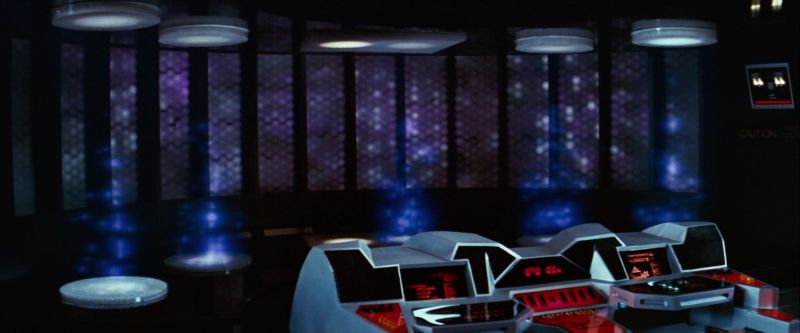
In the 2009 movie Star Trek , Captain Kirk and Sulu plummeted down toward the planet Vulcan without a parachute. “Beam us up, beam us up!” Kirk shouted in desperation. Then at the last second, after a tense scene of Chekov running top speed to the transporter room, their lives were saved moments before they hit the doomed planet’s rocky surface.
These issues have received a lot of attention lately given Trek ’s 50 th Anniversary last year and the series' impending return to TV. Not to mention, in the real world scientists have found recent success in quantum teleporting a particle’s information farther than before (which isn’t the same thing, but still). So while it seems like Trek 's transporter conundrum has never had a satisfying resolution, we thought we’d take a renewed crack at it.
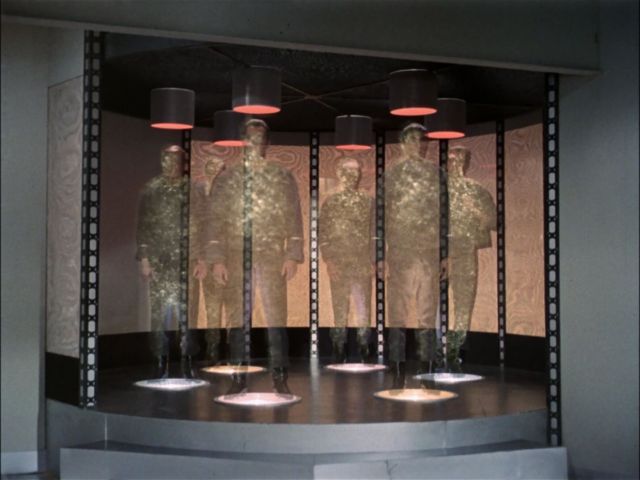
Establishing a lock
Trek has always depicted characters who are hesitant to use the transporter, from Dr. McCoy to the entire crew of Enterprise . "You’re always on the side of, 'those guys are just silly, you gotta trust the future!'" said Jordan Hoffman, a film critic and host of Engage: The Official Star Trek Podcast . "We trust the warp engines and all the other high tech of Star Trek, so why wouldn’t [we] trust the transporter?"
Hoffman points out the first work to express real doubt about the continuity of personhood was the novel Spock Must Die by James Blish, which "played coy" about whether it's really you on the other end of the transporter. To address the questions this raised, a good place to start is by looking at what the transporter actually does.
According to the Star Trek: The Next Generation Technical Manual , when a person steps onto the transporter pad, the computer uses “molecular imaging scanners” to scan his or her body, before the person is converted into a “subatomically debonded matter stream.” In other words, a crew member is taken apart piece by piece, breaking apart the bonds between individual atoms. Then, particles are streamed into a “pattern buffer," where they remain briefly before being sent to their destination.
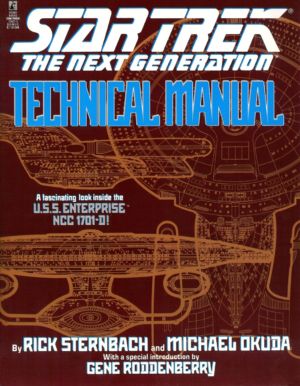
This sounds an awful lot like death . In fact, it’s even more death-y than conventional death where, after the body’s processes have stopped, the body slowly decomposes. The effect is the same—the pieces of you come apart—the transporter’s just a lot more efficient at it.
Further Reading
Once the matter stream arrives at its destination, the person is somehow “rematerialized” or put back together. While the transporter tends to use the person’s atoms to reconstruct a human, it really doesn’t have to. The machine could use totally different atoms, and the effect would be exactly the same.
In fact, in the Deep Space Nine episode “ Our Man Bashir," Captain Sisko and a few other officers are nearly lost during a transporter accident. They beam out from their sabotaged runabout at the last second, but the transporter malfunctions and their patterns must be sent into the station’s computer somehow to save them. Their physical bodies are saved as holographic characters in Dr. Bashir’s holosuite program. Later in the episode, they’re reconstituted using the patterns stored in the holodeck—almost certainly with entirely new atoms.
That sounds an awful lot like a copy—or like a new person. If the transporter is just scanning your data and creating an identical copy somewhere else, then by any reasonable definition, the original person is dead. By analogy, consider a car model. Many cars are produced by the same manufacturer, all from the same design. There’s no way to tell these cars apart, but they’re not the same car.
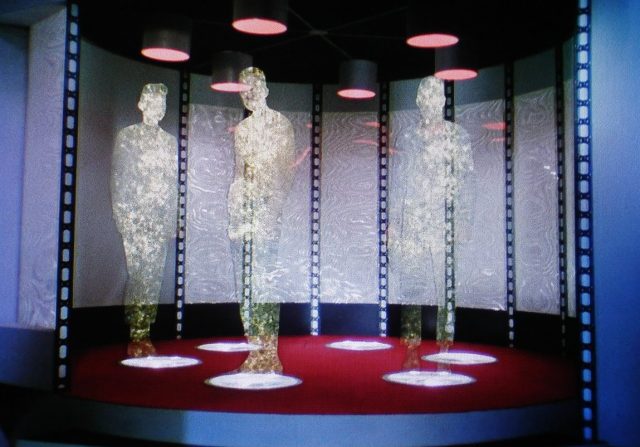
Measure of a man (or other lifeform)
This particular technicality opens a philosophical can of “ gagh , ” which is beyond the scope of this article to fully address and may even be partially subjective (and thus fundamentally unresolvable). For one thing, our bodies grow and change over the course of our lives. Cells multiply, die, and are replaced. Even the brain is no exception.
“There is plenty of change in the brain during development, though birth of new neurons seem to be pretty much restricted to being produced in the dentate gyrus after birth,” Patricia Churchland, neuro-philosopher with the University of California, San Diego, told Ars. “But there is pruning back (especially in early adolescence), as well as massive sprouting of the neurons you are born with.”
This makes a person a bit like a paintbrush whose head and whose handle will both be replaced at different times. Is it still the same brush? While the brain is a bit more complex than that, there certainly is quite a bit of overhauling going on across a person’s life. According to Churchland, “The brain grows about [five times] from birth to adolescence. It makes about a million synapses per second in the first two years after birth," she said. "In early development, a child can lose a whole hemisphere without being changed into a new person. Later in development, lesions can have a greater effect on personality, mobility and cognition, depending on the location of the lesion.”
But at least in everyday language, we still consider ourselves to be the same person from birth to death. And whether or not that’s a valid standard by which to consider oneself the same person, for our purposes, we’ll use this standard of everyday language. So, the question we’re really asking is, “Is a transported person still the same person, to the extent that we’re the same people throughout our lives?” This gives us a clearer criterion on which to assess the question of the transporter.
There’s another, more famous version of the paintbrush example: a thought experiment known as the Ship of Theseus . Theseus wants to keep his ship in tip-top shape, so whenever a board rots, he replaces it with a new one and keeps doing so until none of the original planks remain. Is it still the same ship? By our standards, it clearly is. The pieces have been replaced, but there was a continuity in the ship’s structure between them.
If, however, we destroy the ship but mail its blueprints somewhere else and then build a new, identical ship, it’s not the same ship. It’s a separate ship built from the same blueprints. It doesn’t even matter whether you use the same planks or not. So where does the transporter fit in, again?
reader comments
Channel ars technica.
Star Trek’s Transporter Technology, Explained
Transporters are among the most interesting technology in Star Trek. How exactly is Scotty able to "beam me up?"
Ever since its creation in the late 1960s, Star Trek has been a pinnacle of positive science fiction, envisioning a non-dystopian future where technology has become so advanced that problems that irk mankind today are no longer an issue . World hunger is solved by the unlimited source of food created by a replicator , complex medical diagnostics can take place in a matter of seconds using a tricorder. However, nothing has become such a cornerstone of the many iterations into the franchise as the iconic transporter.
Teleportation has long been a dream of mankind, replacing arduous long-haul flights with a simple matter transportation device. With this gizmo, journeys that would typically take hours can take only seconds. The transporters are used throughout the many iterations into the franchise, from the revolutionary Original Series to the newest addition to the universe, Strange New Worlds . So fundamental are these transporters as a narrative beat that they appear in almost every episode, bar the occasional few. What's more, they often play a key role in solving whatever problem the intrepid adventures of Starfleet face.
RELATED: How Star Trek: The Next Generation Explored Blindness & Accessibility With Geordi LaForge
While there have been a few gizmos and gadgets from the show that have wiggled their way into non-fictional technological creations , unfortunately the transporter is not one of them. Real-world scientists have poured considerable research into it, with successful experiments having already been carried out on a molecular scale, but sadly we are nowhere close to the transporter technology portrayed in the show.
The biggest problem with achieving teleportation is largely down to how advanced and complex most organisms and objects are. Star Trek transporter tech works by breaking down matter such as living organisms, cargo, even gas or liquid-based matter into an energy pattern, in a process that the show calls “dematerialization.” Once each atom is broken down into this pattern, it is “beamed” across to another transporter pad, where it is converted back into matter. This is aptly named “rematerialization.” Interestingly, the famous quote “Beam me up, Scotty”, in reference to the Original Series transporter operator and chord of engineering Montgomery Scott, is actually a misquote, never uttered in the Original Series . The closest occasion was the one time Kirk said “Scotty, beam me up,” years later in the film Star Trek IV: The Voyage Home.
Within the Star Trek universe, there are some limitations to the miraculous technology, such as distance restriction and often an inability to penetrate through shields. There are of course exceptions to these rules, but they are often connected specifically to a particular episodes plot. Writers, as is often the case in long-running TV shows such as this, often break or bend the rules on transporter specifics, so it’s often hard to canonically understand their limitations. In the Original Series it’s noted that it is only possible to transport from one transporter bay to another. However, this rule has been broken multiple times, showing crew members transported from any random location to another, all without the bay. This raises the question as to why they have the designated transporter room to begin with, other than to make grand entrances and create memorable transitions.
While the process sounds simple enough on paper, like sending an email over, the process is riddled with complex problems and potential dangers. It’s no wonder that transporter operators are so highly trained within Starfleet, as the idea of breaking down matter and then reconstructing it in exactly the same way is a daunting task. It is comparable to smashing a vase into tiny pieces, then trying to glue it all back together. Of course, with the wonders of Star Trek technology, this process is vastly automated, but there are still a myriad of problems that can occur.
There have been various episodes devoted to these issues, potentially most notably the Voyager episode “Tuvix”. Tuvok and Neelix, two crew members under the controversial Capt. Janeway, are on an away mission. Upon beaming back to the ship their energy pattern was disrupted, causing it to merge into one pattern and thus rematerialize into one living organism: Tuvix. There kinds of issues are scarily common, and thus there are various characters whom audiences meet across the franchise that are hesitant or even refuse to use transporters.
Transporters are potentially one of the most fascinating technological advancements present within the show, and are often the envy of even modern day audiences. Technology has come ridiculously far since The Original Series first graced televisions, with touch screens, smartphones, and virtual reality all appearing in the real world, and making the old shows feel dated. Transporters, however, along with warp engines and replicators, make even the oldest episodes feel futuristic, setting a standard that has remained relevant more than 50 years later.
MORE: Star Trek: Deep Space 9's Most Heart Wrenching Moment
- More to Explore
- Series & Movies
A Converted Transporter Room
Production Designer Tamara Deverell shows Producer-director Olatunde Osunsanmi how to convert the transporter room back
This is us in the Transporter Room. It had been converted to the U.S.S. Hiawatha’s Transporter Room, and so it had all sorts of weathered paint and frost courtesy Alex Kurtzman’s vision for Episode, "Brother." So, I wondered how easily it would be to convert it back to normal for my episode. Production Designer Tamara Deverell was happy to show me in this video.

Star Trek's Use of Transporters, Explained
Quick links, why star trek has transporters in the first place, how transporters work in star trek stories, is there any real scientific basis for star trek's transporters, is a star trek character the same person after being transported.
There are many iconic things about Star Trek , from the communicators that inspired flip cell phones to the unmistakable silhouette of the USS Enterprise . However, one of the most iconic elements of Gene Roddenberry's universe are the transporters that "beam" characters from one place to another. This technology is one of the earliest and most high-concept ideas in those early shows. Yet, it was born -- like so much in television production -- out of a need to save money. So, how does the fantastical transporter system work? If someone who wasn't a fan of Star Trek was asked to quote a line of dialogue from the show, they most likely would say, "Beam me up, Scotty."
The chief engineer of the original USS Enterprise was also the one often tasked with overseeing this complicated and sometimes dangerous process. Yet, the phrase never appears in Star Trek: The Original Series . In fact, the closest fans ever got to hearing it was in Star Trek IV: The Voyage Home . While saying goodbye to Gillian, their 20th Century marine biologist ally, Kirk says, "Scotty, beam me up." Throughout every future iteration of the franchise, the transporter is a crucial part of the technological armaments used in the stories. While no single science-fiction concept is wholly original, the transporter is one element that's rarely copied by other storytelling universes. Doctor Who uses them, but it's often only the aliens or antagonists who have access to them, and for good reason. While it saved money for production, conceptually it complicates the series' drama.
Best Star Trek Episodes of 2023
Looking back at Star Trek: The Original Series , modern-day viewers can be forgiven for saying it looks "cheap." Yet, during its day, the show was one of the most expensive on television, which is why The Original Series was canceled despite strong fan support. In fact, while still in development, Gene Roddenberry almost blew the budget simply researching starships. From that experience Roddenberry said, "I would blow the whole budget…just in landing the [ship] on a planet," in The Fifty-Year Mission: The First 25 Years by Edward Gross and Mark A. Altman. "[T]he transporter idea was conceived, so we could get our people down to the planet fast…and get our story going by page two."
The technology also allowed the characters to only bring the props they could carry like phasers, communicators and tricorders. Anything else they needed could simply be transported to them. Len Wein, a writer on the early Star Trek comics , chided earlier writers for showing the characters with backpacks, because anything they needed was a simple beam-down away. Still, the transporter posed a problem for the production crew. It was one of many visual effects techniques that had to be invented for the series. Sure, the use of composite shots -- which allow figures to appear or disappear -- existed as long as motion picture cameras. But in Star Trek , everything had to be bigger.
In The Fifty-Year Mission , visual effects legend Howard A. Anderson talked about how they achieved the effect. They "used aluminum dust falling through a beam of high-intensity light" photographed separately. Using matte shots, they would shoot the characters, followed by a cut-out of the character with the glitter effect, and then make the effect disappear leaving an empty transporter pad. It was one of the show's simpler shots, but that, along with the sound, became a beloved hallmark of the series. Despite modern advancements, the transporter effect still has elements of the original.
Star Trek's Renaissance Is So Strong, It Has Its Own Awards Show
In most cases, the transporters still work the way they were intended to, namely by getting characters into the action quickly. However, they are also a source of drama. In Captain's Logs: The Unauthorized Complete Trek Voyages , also by Gross and Altman, Roddenberry lamented about a cut scene from the (second) pilot where Dr. McCoy gives voice to his concern about using it. The line told fans "one of these days we may see a story about a transporter malfunction." When this eventually happened in The Original Series , for "regular viewers, it comes out of the blue," he said. A transporter malfunction is also how the show introduced Star Trek's infamous "Mirror Universe."
Of course, if the characters could simply be whisked out of dangerous situations with a transporter, it hurts the drama. In The Fifty-Year Mission: The Next 25 Years , second-wave writer and producer Hans Beimler said they "had to break down the transporter…so that [the characters] could be in trouble." This is why there are so many "ionic storms" or stories set in deep caves. The character of Dr. Pulaski on Star Trek: The Next Generation shared Dr. McCoy's contempt for transporters, too. Yet, it wasn't always a hindrance to the storytelling.
In The Next Generation Season 6, a transporter malfunction created a double of Riker who spent years on a planet waiting for rescue. In Star Trek: Voyager , another malfunction -- in concert with an alien flower -- bonded two characters together into a new being in the episode "Tuvix." As recently as 2023, the transporters were used in Star Trek: Picard as a key element of the Borg's plan to stealthily invade Starfleet by assimilating the officers under the age of 25. This technology is about much more today than getting characters to a planet quickly and cheaply.
Star Trek's 'Other Gene' Is an Unsung Original Series Pioneer
It's surprising how scientifically accurate a show like Star Trek can be, even without its science consultants. In an early The Original Series episode, Captain Kirk makes reference to what sounds like a black hole, a year before the term appeared in scientific literature, according to science consultant and astrophysicist Erin MacDonald on NPR's Science Friday . Regretfully, she said the transporter is not one of those things. Beyond the massive task of disassembling and reassembling seven billion-billion-billion particles, there are the laws of physics to contend with, namely the Heisenberg Uncertainty Principle.
The scientific concept states there is an incalculable measure of uncertainty in measuring and locating a particle at any given time. Star Trek sometimes takes liberties with real physics. MacDonald noted the depiction of gravity waves in Season 4 of Star Trek: Discovery was depicted inaccurately because it was more visually appealing. It is a television series, after all. Still, Star Trek tries to account for these things. In certain episodes when transporter "technobabble" is required, there's an element called a "Heisenberg Compensator." This accounts for the uncertainty, but asked how it works, all MacDonald can say is "very well, thank you."
There are more recent elements that are equally scientifically preposterous, especially the "pattern buffer." This is a memory storage device that holds a transporter "pattern." In The Next Generation , Scotty is found alive decades after his disappearance inside one. Strange New Worlds used the concept, too. Dr. M'Benga used it to store wounded Starfleet officers in the Klingon war and, later, his own daughter who had a degenerative disease. It makes for great fiction, but it's not real science. In fact, there is a massive debate about whether the transporter kills each person who goes through it.
This Underrated Star Trek Series Has the Franchise's Best Pilot
In Star Trek: Enterprise Season 4 , the inventor of the transporter, Dr. Emory Erickson visits the ship for an experiment that's a secret plan to save his son, lost in a transporter accident. During the episode, he dismisses out-of-hand the idea that the transporter "kills" the people who use it. However, it's not so easy to dismiss. The transporter breaks down the physical structure of a person to the smallest particle and then rebuilds them in a different location. There is an argument to be made that they are not the "same" person who went into the machine. Instead, they are a new being who possesses the same matter and memories, or in Will and Thomas Riker's cases, two people with the same matter and memories.
With this philosophical question, there is no clear answer. Dr. Erickson is convinced the idea is nonsense, but Star Trek: Picard proved it's not so beyond the pale. The Starfleet officers had their DNA rewritten with biological Borg elements they didn't have before. Dr. Crusher notes the "bio-filters" should've caught it. These filters are supposed to be able to remove contaminants and pathogens an away team might pick up on an alien planet.
While the transporter is reassembling a person's particles, it can and does change them when required. This is a fan-debate for which there is no clear answer, nor should there be. For Star Trek's purposes, however, the people who are transported aren't killed in the process. The one exception is the people in Star Trek: The Motion Picture whose molecules were scrambled by beaming aboard the refitted USS Enterprise . Despite Roddeberry's desire for his universe to hew closely to real-world science, Star Trek 's transporters are its most magical technology.
Star Trek is an American science fiction media franchise created by Gene Roddenberry, which began with the eponymous 1960s television series and became a worldwide pop-culture phenomenon .
Created by Gene Roddenberry
First Film Star Trek: The Motion Picture
Latest Film Star Trek: Nemesis
First TV Show Star Trek: The Original Series
Latest TV Show Star Trek: Strange New Worlds
Cast Nichelle Nichols, Scott Bakula, Kate Mulgrew, Jonathan Frakes, Patrick Stewart, William Shatner, Leonard Nimoy, Avery Brooks, Deforest Kelley, James Doohan
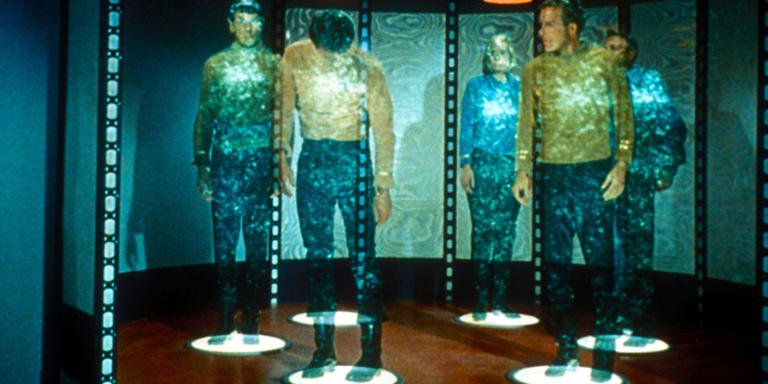

Do Star Trek Teleporters Actually Kill You? Here’s the Science
By: Author Brad Burnie
Posted on Published: October 15, 2020 - Last updated: August 26, 2022
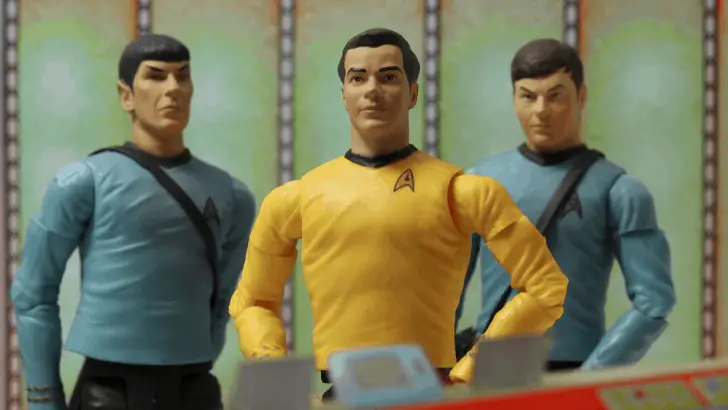
Share the Universe!
If you’ve watched the TV show Star Trek: Enterprise , then you’ve heard the concerns the crew had about the teleporters (known as transporters) in the show. These concerns were that the transporters weren’t safe for humans to use because they dematerialize your atoms. That sounds like it would essentially kill you, right?
Creators of Star Trek haven’t confirmed transporters kill you. However, based solely on the science, transporters do kill you. These teleportation devices take scans of the molecules in your body, store them in the pattern buffer, convert them into energy, and then beam them to the desired location.
Let’s take a look at the science behind these teleporters and how they are meant to work.
The Science of Teleportation – Star Trek Style
The transporter /teleportation devices in the Star Trek universe have been a hot topic of debate since they were introduced in Star Trek: The Original Series . There are many characters of the franchise who have a fear of using the machine. This fear may actually be warranted.
Throughout the franchise, viewers have been given snippets on how the futuristic technology works. There have been books written by the show’s art departments and creators. However, these nuggets of information aren’t always the most realistic.
The science of the teleporter is no different. In fact, the very nature of what the device does isn’t possible if you consider everything it does and real-life physics. According to the official Star Trek website, the transporter will convert a person into energy , send that energy to your desired location, and then reassemble that person back into matter.
The transporters do this by ripping apart your atoms and molecules. Now, real-life physics and biology would suggest that to be an impossible thing to do without killing the person in the process. So, based on that, these transporters in Star Trek do, in fact, kill you.
However, many fans believe that since the human’s consciousness is retained after the body is reassembled that you aren’t actually dying. This poses a morality question on whether or not we should use the transporters in the first place.
Let’s take a look at the actual process below to see how humanity can be okay with this potential murder device.
The Transporter Scans Your Body
The overall aspect of the first part of the transporter process is pretty simple. The machine takes a scan of your body, right down to the atom level. This is looking at your entire molecular makeup. Every molecule and atom in your body (inside and out) gets accounted for and copied.
It isn’t hard to wrap your brain around this part of the process, especially these days. In the real world, there are several different devices that do exactly what the transporter does in this stage, just not with biological material. These real world devices are things like X-Ray and MRI machines.
The Teleporter Converts Your Atoms Into Energy
This is where things get a little tricky and potentially dangerous. Once the scan has been made, your body is broken down into energy. This is known as a matter stream .
What this means is that your body is ripped apart atom by atom until it’s simply a stream of disconnected energy and matter. The dematerialization isn’t supposed to hurt the person being transported. It also happens at the same time as the next step, which is storing a copy in the pattern buffer.
This is the part of the process that many fans believe kills the original person being transported. If you are taken apart at the atomic level, how can you still be alive in any sense of the world? Based on what is known from real world science and biology and physics, there’s no chance you’d survive this step .
To make the science simple, the amount of energy needed to complete the entire process of being transported is equal to that of a bolt of lightning . While it could be possible to survive getting struck by lightning, it isn’t a very likely thing to happen.
There are fans who feel that since your mind is preserved with little to no delay in consciousness, that you aren’t being killed at all. The problem is that your original body is being destroyed. So, in a way, it would appear as though you are being killed.
It Saves a Copy in the Pattern Buffer
Once the transporter has converted you into the energy stream, it makes a detailed copy of everything about you and stores it in the pattern buffer . This has been used in many situations throughout the franchise to fix transporter accidents.
There have been accounts where the pattern buffer was used to store people for several years. One instance of this happened in 2295 when Captain Scott’s ship was in distress . The pattern buffer was able to keep Captain Scott safe for 74 years before the crew of the Enterprise-D found him and rematerialized him.
This is not an ideal situation. Technically, the pattern buffer is only capable of keeping this matter stream stored for seven minutes. After that, the stream degrades, and it isn’t guaranteed to return people to their pre-transporter conditions.
Captain Scott was able to preserve himself and another member of his crew within the transporter. Unfortunately, the other person stored in the pattern buffer wasn’t lucky enough to rematerialize after they were rescued from the transporter.
In the end, the copy of you is needed in order to bring you back together at your destination. Transporters actually have two pattern buffers in their systems to work as a backup in case one of them goes down.
The Transporter Beams the Data Stream to the Desired Location
After you’ve been converted into energy and safely stored into the pattern buffer, the transporter uses an emitter array to send your matter stream to the desired location.
This energy beam is similar to the ones used on starships for tractor beams and phase beams. These beams are alike because it’s pure energy that makes them possible, and it comes from the emitter array. However, when transporters send the matter stream, the stream doesn’t appear to beam down as the tractor beam does.
One of the biggest scientific issues here is the fact that Star Trek seems to be able to beam you into almost any location. They do place some limitations on the where, but for the most part, those limits involve extremely dense materials (mountains, rocks) and sometimes if there is a force field blocking the signal. Based on real science, that just isn’t possible.
Finally, the Transporter Reassembles the Atoms of the Data Stream
Once the matter stream has been beamed to the location, your atoms and molecules are reassembled. It’s here that many fans believe the person who is beamed down is, in fact, just a copy of the original person.
The problem involved here is that in order for this to work, there would need to be a second device on the receiving end . Without a device at the destination, there’s no scientific way for your atoms and molecules to be reassembled in the correct way.
Star Trek doesn’t utilize this two-point system at all, not even in the early prequel series like Star Trek: Enterprise. Now, that sounds like a death sentence right there.

What Does All This Mean in the End?
The key to making science fiction work for its viewers is to make it as believable as possible. This means there has to be some possibility that it could be real. There are actual formulas that measure the amount of energy needed to convert a human being into a matter stream. Or how much radiation would be needed to beam and reassemble a human.
The results of these formulas aren’t possible in our time. The amount of energy to convert you into a matter stream is unobtainable. As an example, the amount of energy needed would be equal to roughly 130 thousand times more powerful than the atomic bomb from 1945.
Furthermore, the level of radiation needed to beam the matter stream anywhere isn’t even known to us. Gamma radiation is the highest level of radiation known to man, and even that is too weak to send the amount of energy a matter stream would contain.
Think about those levels of energy and radiation. Then think about exposing the human body to enough of both. No wonder some of the characters are nervous about using it!
Take a look at the five-minute video below for a quick recap of how transporters work and the trouble they can cause:
Are You Merely a Copy After Being Transported?
It isn’t just the fans who believe it’s just a copy at the end of the transporter. There are characters on the show who have voiced these concerns as well.
Doctor McCoy is well known within the franchise for voicing his fears of using the transporter device. If your body is being ripped apart at the atomic level and put back together somewhere else, are you actually just a copy?
While there are characters who fear the transporter, there are others who try their best to reassure them of their safety. Spock has been referenced as saying a few times that “a difference which makes no difference is no difference.” This is a quote from William James .
If our full consciousness is retained and put into the copy, wouldn’t we essentially still be ourselves? Once the original you is destroyed, wouldn’t the copy become the original you? Since there can only be one of you, it would stand to reason that the copy is, in fact, the new original.
Transporter Speeds and Distances
One of the biggest things to consider when characters wanted to use the transporter within the show was that it shouldn’t be used at warp speed . This is because there are serious distortions that can occur when atoms try to reassembly at different speeds.
Transporting at warp speed could be possible, and was accomplished in-universe. The best way to accomplish this was to ensure both destinations were traveling at the exact same speed.
The range is important to keep in mind as well. This range will be different between species. By the time of Picard, humans have a range of 40 thousand kilometers. Other species have longer or shorter distances, depending on their own limitations.
The further away your desired destination is, the more degraded the matter stream within the pattern buffer can remain intact. You risk your atoms being put together incorrectly.
Transporter Malfunctions and Accidents
There have been many transporter malfunctions and accidents across the franchise. These accidents typically occur when there is a problem with defective equipment.
- Combining two crew members – In the TV show Star Trek: Voyager , two crew members were combined into one being as a result of a transporter malfunction.
- Creating duplicates – In an episode of Star Trek: The Next Generation , another William Riker was created and stranded on another planet with no one having any clue he existed.
- Objects embedded inside people – Star Trek: Enterprise shows how dangerous the transporter can be when the crew beams up a crew member in distress. He makes it back onto the ship with leaves embedded in his skin.
- Age reversal – Also in The Next Generation, members of the crew, Riker, and Picard included, were reversed in age to that of 12-year-old kids .
- Death – There are several instances when the transporter devices of the franchise have killed crew members.
Check out the video below for a clip of a transporter accident from Star Trek: The Motion Picture :
Characters With Fears of Being Transported
There are many characters who have some level of fear when it comes to transporter devices. Most famously being Doctor McCoy and Lt. Barclay, or the entire crew from the TV adaptation, Star Trek: Enterprise.
These characters may have had some good reasoning for being so afraid of the transporter. In addition to the fact that your body is being ripped apart atom by atom, there are also serious side effects that could occur—one of these being Transporter Psychosis.
Check out the video below of a scene from Star Trek: The Next Generation (season six, episode two), when Lt. Barclay asks the computer to explain the condition to him:
Real World Teleporting
While we’re still light-years away from being able to teleport a biological object, there are instances when humans have succeeded in producing a kind of teleportation. These aren’t at all the way we see it done on Star Trek, but they’re as close to it as you can actually get with the technology we have today.
Fax Machines
One of the first types of teleportation devices could be considered the fax machine . This device took a scan of your letter or notice and sent the information to another machine. It replicated the original in another location.
Now, this goes back to the question many ask about the transporters. Is it just a copy then? Well, yes. But if you were to destroy the original, wouldn’t the copy then become the original? Couldn’t we say the same for a human being transported?
3D Printers
3D printers are capable of being a version of teleportation. In fact, in 2015, some German researchers were able to create a device that uses a scanner and a 3D printer to “teleport” objects to new locations.
This simply involves the computer scanning the object and sending the information to its new desired location, much like a fax machine. After that, the 3D printer will create the object. This type of device is more readily available to people these days. It’s as close as we can get to teleporting objects.
Quantum Teleportation
There is an instance of real world teleportation that exists today called Quantum Teleportation . However, it isn’t quite the way we know it from Star Trek. In fact, this method of teleportation wasn’t discovered until the 1990s. There are plenty of formulas that explain what this process is and what it means for the transporters of Star Trek.
Basically, this method shows that the state of atoms can be transported to another location. However, there is a catch. There’s a rule with this kind of science, and that is there is no cloning allowed. In order for every last atom in your body to be transported, the original would have to be completely destroyed . Then and only then can this quantum teleportation succeed in creating the copy at the desired location.
Check out the video below for more details about teleportation in relation to Star Trek’s transporters:
The following video gives a more in-depth approach to the workings of quantum teleportation and quantum entanglement:
There you have it. The Star Trek franchise would have us believe the people who use these teleporters are completely fine. Perhaps they are, in a way. However, science seems to suggest otherwise. Based on real world physics and science, the Star Trek teleporters do actually kill you.
- Wikipedia: Transporter (Star Trek)
- Wikipedia: Star Trek: The Original Series
- Fandom: Transporter phobia
- Star Trek: Transporter
- Star Trek: Pattern-buffer
- Fandom: Pattern buffer
- Fandom: Matter stream
- Wikipedia: USS Enterprise (NCC-1701-D)
- Quora: How does the transporter work in Star Trek?
- Fandom: Emitter array
- Wikipedia: Energy beam
- L-Università ta’ Malta: The Transporter in Star Trek: Can it Work?
- Thought Co: Star Trek: Instantaneous Matter Transport
- YouTube: Transporters and Quantum Teleportation
- IFL Science: The Horrifying Truth About Star Trek Transporters
- YouTube: The Trouble with Transporters
- YouTube: How to Teleport Schrödinger’s Cat
- YouTube: Doctor Google
- Wikipedia: William James
- Live Science: Science Fiction or Fact: Will Teleporters Ever Beam Us Up?
- SyFy: THE TERRIBLE TRUTH ABOUT STAR TREK’S TRANSPORTERS
- Forbes: The Physics Of Star Trek: Quantum Teleportation Versus Transporters
- Nasa: The Science of Star Trek
- First Post: STAR TREK-STYLE TRANSPORTER COMES CLOSER TO REALITY
- Fandom: Is the Star Trek Transporter Killing Someone Each Time They Use It?
- Stack Exchange: In Star Trek, does the original die in teleportation?
- Ars Technica: Is beaming down in Star Trek a death sentence?
- Fandom: Alfred Korzybski
- How Stuff Works: 10 ‘Star Trek’ Technologies That Actually Came True
- Edition: Beam me up: Just how close are we to teleportation?
- Space: The Top 10 Star Trek Technologies
- The Guardian: Teleportation: will it ever be a possibility?
- Live About: 12 Worst Transporter Accidents on “Star Trek”
- YouTube: Star Trek The Motion Picture – Transporter Malfunction
- Fandom: Transporter accident
- Wikipedia: Star Trek: Enterprise
- Wikipedia: Gamma ray
- Wikipedia: Star Trek: Voyager
- Wikipedia: 3D printing Processes and printers
- Wikipedia: Star Trek: The Next Generation
- Wikipedia: Fax
- Wikipedia: Quantum teleportation
- Wikipedia: Star Trek: The Motion Picture

Brad Burnie is the founder of Starships.com. He loves all video game genres. In his spare time, he loves reading, watching movies, and gaming

Transporter Room
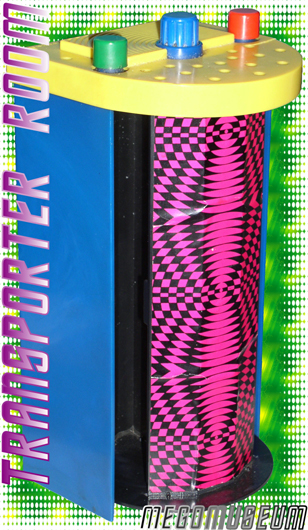
The Transporter Room (Cat. No 22803), an elusive UK exclusive. This accessory was sold by the Bradgate Division of Palitoy in the UK, and took the place of the Enterprise Playset in Great Britain. The name “Mego” appears nowhere on the packaging; the only evidence which betrays its state-side origins is the imprint of “© MEGO 1975” on the top of the toy. The Transporter Room toy was merely a reworking of the Transporter mechanism from the Enterprise Playset. Palitoy took the basic blue plastic housing and black tumbler, added a yellow plastic stylized roof, and voila!–one more toy variant for Mego collectors to track down.
It is not known for certain exactly why this UK Transporter substitution was felt necessary by Palitoy, but the following theory has been put forth: It is possible that this was a shipping cost-saving measure. The vinyl housing of the Enterprise was manufactured in the United States, but the plastic accessories–including the Transporter Unit–were made in Hong Kong. Assuming that Palitoy would have had to assemble any Enterprise Playsets themselves once all of the components arrived in the UK, the economical aspect of this choice becomes clear. Palitoy avoided the exorbitant manufacturing and freight costs altogether by instead focusing on what was arguably the coolest part of the playset–the Transporter Room–and just released that.
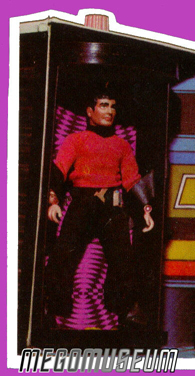
A few notes worth mentioning on this rare item:
* In a further example of Palitoy economy, there is no instruction sheet included with the toy. The operating directions are, instead, printed on the outside of the box.
* Like its cousins, the French and Canadian Enterprise Playsets, the stylized “Transporter Effect” stickers were not included as six separate strips that had to be applied onto the toy by the child. Instead, two large labels–one on each side of the tumbler–were applied as part of the manufacturing process.
* The only other thing contained within the box besides the Transporter itself is a square cardboard “spacer” which sits at the bottom of the package underneath the Transporter. This is worth mentioning because it is often missing.
* Interestingly, Mego had originally intended for the “Transporter Effect” labels on the Enterprise to be printed in magenta and black. This is evidenced by the prototype picture of the playset on the back of “6-face” cards. For reasons unknown, Mego changed their minds and went with a yellow/black motif. It would take another manufacturer in another country to finally make good on Mego’s original design intent.
* The British were apparently very keen on the design and play-value of this toy, as Denys Fisher would later employ the same mechanism ,albeit in a slightly larger scale, in the TARDIS accessory for their “Doctor Who” line of 9″ action figures.
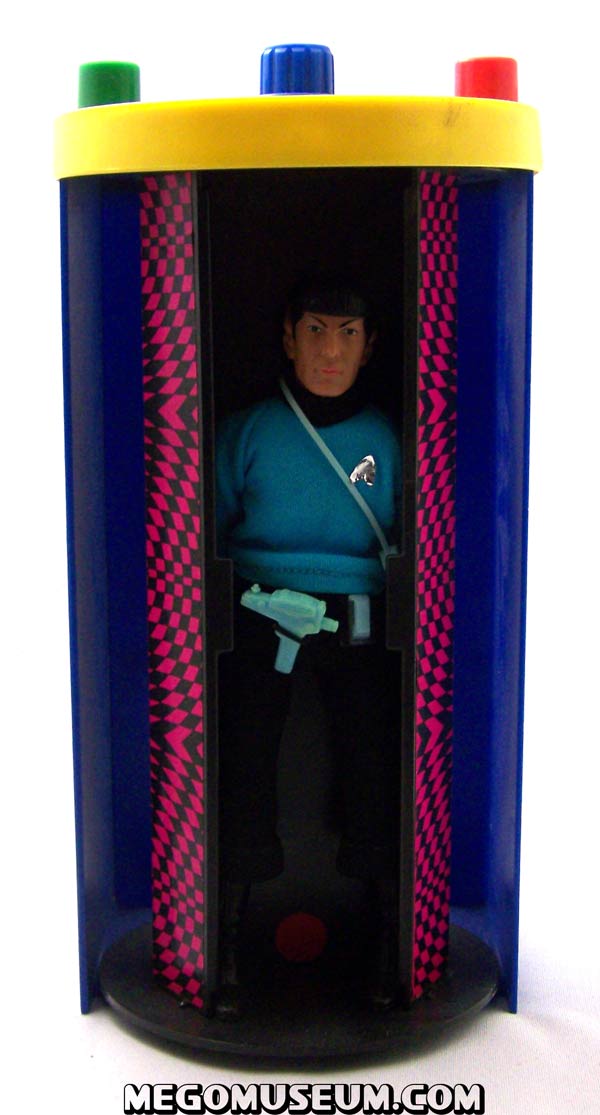
Palitoy Transporter Playset (Spock not Included)
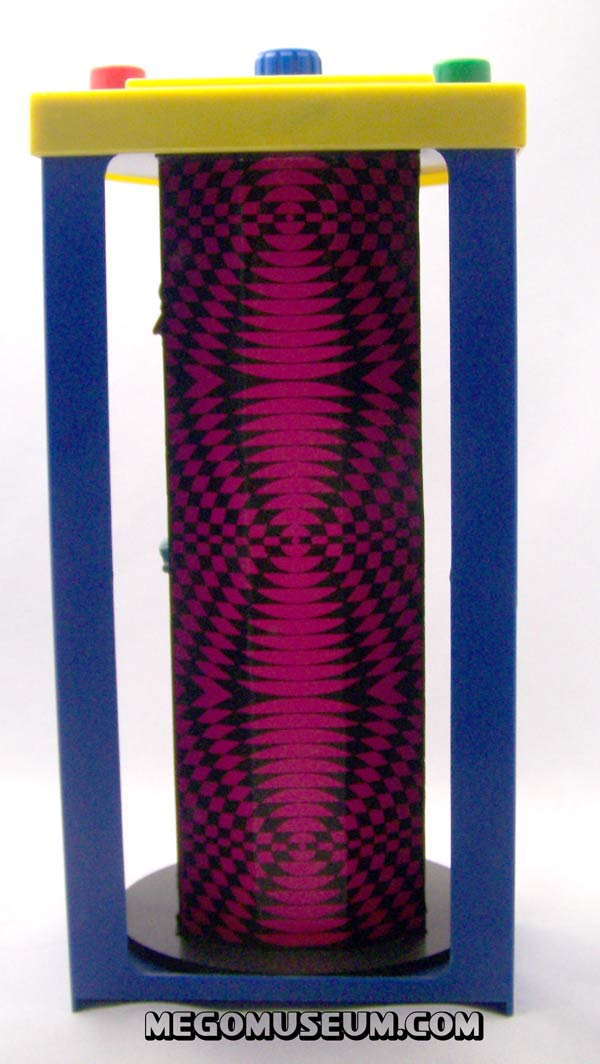
Palitoy Star Trek Transporter Room in action
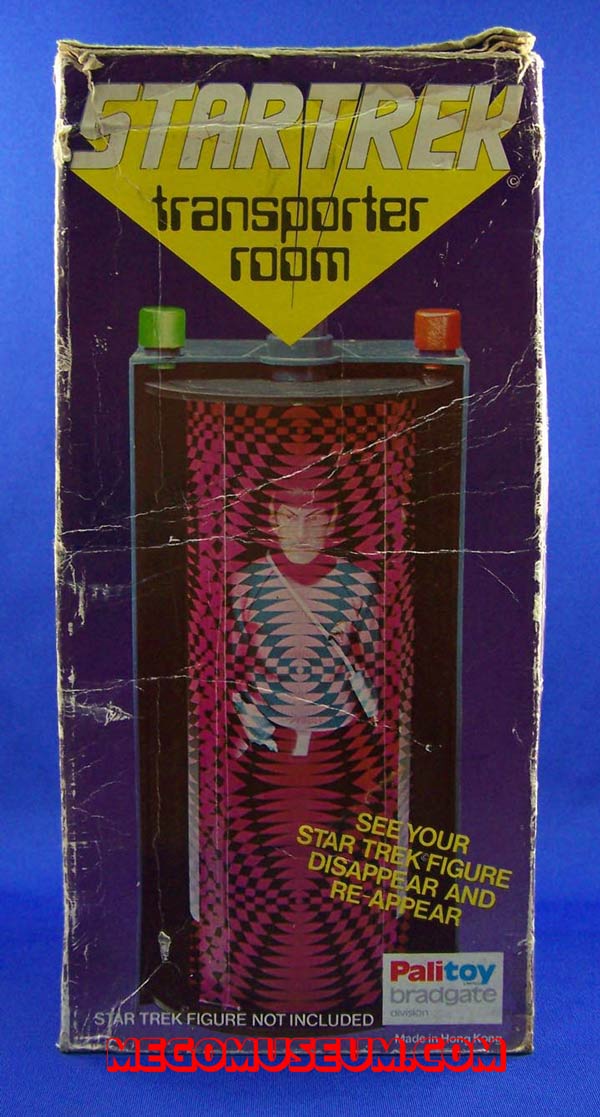
Box for Palitoy Star Trek Transporter Room.
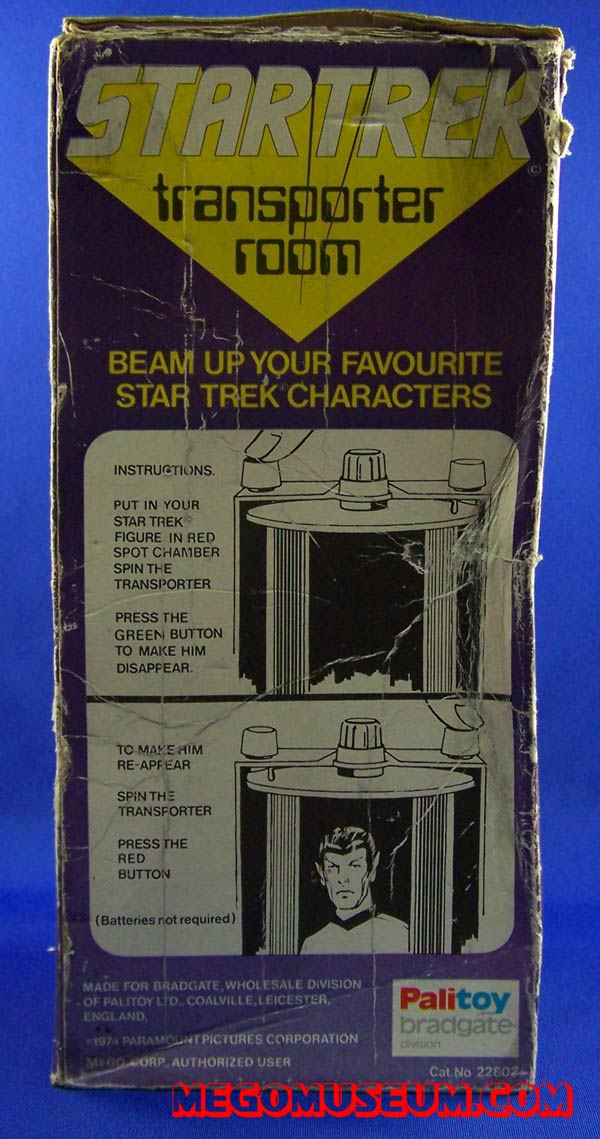
Box for Palitoy Star Trek Transporter Room
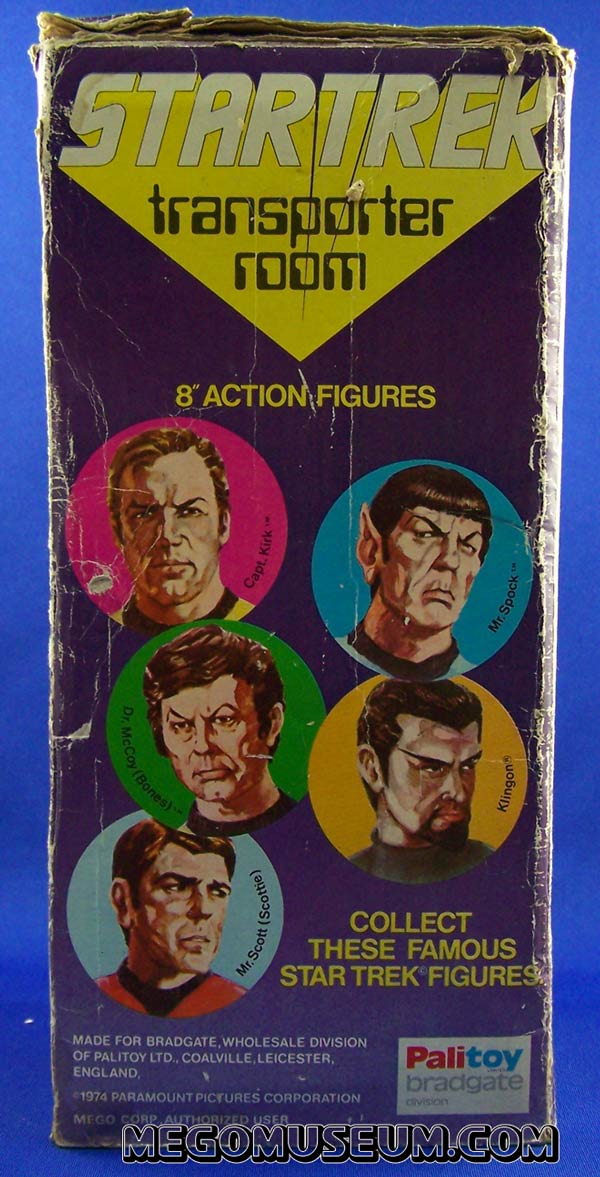
Palitoy Star Trek Transporter Room Box.
The box for the Transporter Room accessory.
Want to see the Transporter do its thing? Glide your mouse over the picture above!
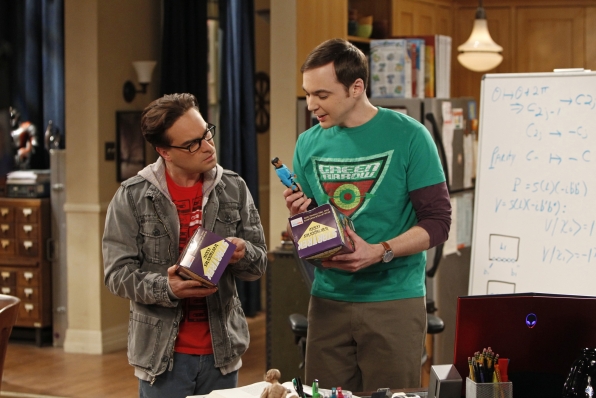
The Transporter featured heavily in a March 2012 episode of “The Big Bang Theory” on CBS, the plot centered around Sheldon’s conversations with a Mego Spock figure (voiced by Leonard Nimoy) as to keep the item mint in box or play with it.
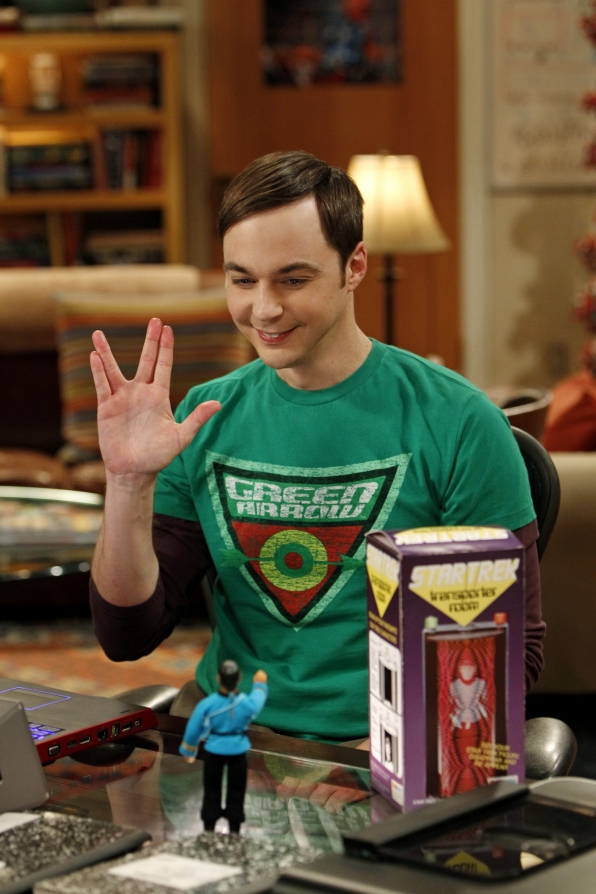
We’re happy to report that the word “Mego” was pronounced correctly.
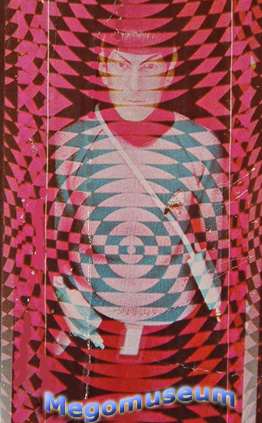
Pictures and commentary graciously provided by Kevin (MirrorSpock).
Related Images:
This story is over 5 years old.
How to create the 'star trek' teleporter effect for your own sci-fi film.
ONE EMAIL. ONE STORY. EVERY WEEK. SIGN UP FOR THE VICE NEWSLETTER.
By signing up, you agree to the Terms of Use and Privacy Policy & to receive electronic communications from Vice Media Group, which may include marketing promotions, advertisements and sponsored content.
- International edition
- Australia edition
- Europe edition
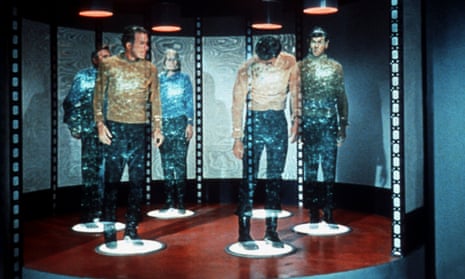
Beam me up Scotty: German scientists invent working teleporter, of sorts
New system destructively scans objects transmits them through encrypted communications across any distance and rebuilds it the other side
Teleportation has been the holy grail of transport for decades, ever since Mr Scott first beamed up Captain Kirk and his crew in the 1966 opening episode of Star Trek . Now the technology may have been cracked in real life … sort of.
Scientists from the Hasso Plattner Institute in Potsdam have invented a real-life teleporter system that can scan in an object and “beam it” to another location.
Not quite the dematerialisation and reconstruction of science fiction, the system relies on destructive scanning and 3D printing .
An object at one end of the system is milled down layer-by-layer, creating a scan per layer which is then transmitted through an encrypted communication to a 3D printer. The printer then replicates the original object layer by layer, effectively teleporting an object from one place to another.
“We present a simple self-contained appliance that allows relocating inanimate physical objects across distance,” said the six person team in a paper submitted for the Tangible, Embedded and Embodied Interaction conference at Stanford University. “Users place an object into the sender unit, enter the address of a receiver unit, and press the relocate button.”
The system dubbed “Scotty” in homage to the Enterprise’s much beleaguered chief engineer, differs from previous systems that merely copy physical object as its layer-by-layer deconstruction and encrypted transmission ensures that only one copy of the object exists at any one time, according to the scientists.
Real-world applications are pretty short for this kind of destruction and reconstruction. But the encryption, transmission and 3D printing objects could be key for companies wishing to sell goods via home 3D printers, ensuring only one copy could be made per purchase – effectively digital rights management for 3D printed objects.
Those looking to cut their commute by simply beaming into the office will have to wait at least another decade or two.
- 3D printing
Comments (…)
Most viewed.

Transporter accident
- View history

Transporter malfunction
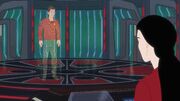
A man beaming in without his legs thanks to a transporter accident
A transporter accident or transporter malfunction was an often unintentional occurrence caused by the malfunctioning of a transporter , however, some transporter accidents came as a result of intentional causes, such as murder or assassination .
As with all technology , along with the unknown risks associated with matter-energy conversion , transporter accidents were often an unexpected reality of the 22nd , 23rd and 24th centuries . Though transporters were a relatively safe way to maneuver from one point to another, there were nonetheless multiple cases of transporter accidents.
Numerous independent technological and or environmental influences can cause a transporter malfunction. Defective technological components, such as bio-filters , pattern buffers , and molecular imaging scanners , and likewise, anomalies, power overloads, malfunctions were often investigated. Scans of a planet's surface or atmosphere were also conducted, as well as the consideration of alien interferences. ( VOY : " Tuvix ")
By the mid-24th century, there were typically, on average, two or three transporter accidents a year across the Federation, yet millions of people were transported every day. Because of transporter accidents, some people suffered from transporter phobia or experienced transporter shock . ( TNG : " Realm Of Fear "; DS9 : " Past Tense, Part I ")
- 1.2 Reverse aging
- 1.3 Foreign object contamination
- 1.4 Transporter psychosis
- 1.5 Phasing
- 2.1 The "Yin Yang" effect
- 2.2 Split one entity into two identical entities
- 2.3 Two entities merged into one (aka "splicing")
- 3.1 Incorrect coordinates
- 3.2 Mirror universe
- 3.3 Time travel
Physical and mental manipulations [ ]
In 2139 , the pattern of Quinn Erickson , son of the inventor of the matter transporter Emory Erickson , was lost during testing of new sub-quantum transporter technology. However, the pattern was preserved in a subspace phenomenon known as " The Barrens ". Fluctuations in subspace allowed Erickson's pattern to reform periodically, taking the form of a ghostly figure. When Erickson was finally rematerialized in 2154 , the pattern had deteriorated, and Erickson died seconds after materialization. ( ENT : " Daedalus ")
According to Montgomery Scott , as of 2269 , if a transporter had insufficient power , then there was the real possibility that transportees would " come aboard [as] a mass of dying flesh . " ( TOS : " The Savage Curtain ")

The death of Commander Sonak and another officer in the 2270s
In the 2270s , two USS Enterprise crewmen, including Science Officer Commander Sonak as well as a female officer , were killed in a transporter malfunction while beaming to the Enterprise , which had recently been refitted . Sonak was coming aboard to initiate his duties as the ship's senior science officer. During the transport sequence, a malfunction caused a corruption of the buffer pattern for the commander and the crewperson. As they began to re-materialize, the transporter systems couldn't cope with the data loss and their physical form became "deformed"; the female crewperson screamed out in agony. The transportation failed, returning the deformed bodies back to Earth. The transport chief planet-side reported back, shaken, "Enterprise. What we got back didn't live long... fortunately. " ( Star Trek: The Motion Picture )
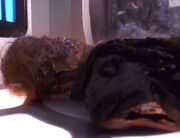
Trentin Fala killed after her transporter beam was scrambled by a remat detonator
The Bajoran Trentin Fala was killed in a transporter malfunction aboard one of Deep Space 9 's runabouts that was caused by a remat detonator . The detonator caused a power surge in the pattern buffer, and interfered with the integration matrix . Lieutenant Commanders Worf and Jadzia Dax , who were conducting the transport, attempted to transfer Fala's pattern to the secondary buffer while boosting the gain to the energizing coils , but the settings were maxed out, and the transporter beam was scrambled as she rematerialized, leaving a smoking skeleton wearing tattered clothing on the transporter pad. Though the transporter security system typically scans for such devices, the culprit responsible for planting the detonator on Fala had a sophisticated understanding of Starfleet security protocols . ( DS9 : " The Darkness and the Light ")
In early 2375 , Weyoun 5 was killed in a transporter accident. Damar was to have been with him but "had been called away," casting suspicion on him for possibly "arranging" the incident. ( DS9 : " Treachery, Faith and the Great River ")
Reverse aging [ ]
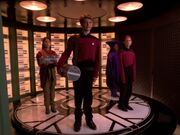
De-aged crew members
In 2369 , Jean-Luc Picard , Ro Laren , Guinan and Keiko O'Brien were physically reverted to twelve-year olds after the transporter deleted rybo-viroxic-nucleic sequences from their genes . This presented some difficulties, notably with Picard's ability to command and the O'Briens' marital relationship. There were two options: do nothing or attempt to recreate them using their last fully-formed patterns to replace the missing sequences. Beverly Crusher was hesitant to send them through the transporter again, until they could figure out what had caused the malfunction, fearing they would lose even more and become younger.
Later, it was discovered that a molecular reversion field had penetrated the hull of the shuttle, causing the transporter to register only part of their patterns. Following the upload of their adult patterns, Miles O'Brien successfully re-aged Picard and the others. ( TNG : " Rascals ")
A similar process was also used to restore Doctor Katherine Pulaski to her original age in 2365 . ( TNG : " Unnatural Selection ")
Foreign object contamination [ ]

The result of a transporter accident in 2151
In 2151 , Crewman Ethan Novakovich was beamed back from the face of a planet later known as Archer IV by the still-experimental transporter system aboard Enterprise NX-01 . The emergency transport was attempted during a fierce windstorm. Upon arrival, he was unconscious and had rocks, leaves, and other debris from the planet's surface embedded in his skin, due to a malfunction in the phase discriminator .
However, due to the fact that " Human skin is a resilient organ , " Phlox was able to remove the debris and repair the rather extensive damage, and Novakovich was expected to recover fully. ( ENT : " Strange New World ")
Transporter psychosis [ ]
In early models of the transporter, errors at the molecular level during rematerialization could cause serious damage to living subjects over time. As a result of these errors, some subjects developed a syndrome that was named " transporter psychosis ", first diagnosed on Delinia II in 2209 . This was eliminated after multiplex pattern buffers were perfected, around 2319 . ( TNG : " Realm Of Fear ")
Phasing [ ]
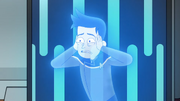
Boimler out of phase
In 2380 , Ensign Sam Rutherford experimented with the transporter systems aboard the USS Cerritos , with the hopes of making the transporter itself a bit faster. He tested his work by transporting Ensign Brad Boimler to one pad and back, but an error in his work resulted in Boimler beaming back one millicochrane out of place. This resulted in Boimler appearing out of phase, and exerting the loud pitch of the transporter itself. While this accident warranted Dr. T'Ana to contact Division 14 , and give Boimler a small leave of absence to recover at Endicronimas V 's medical spa, colloquially known as " The Farm ". Boimler was unharmed, as the effect itself was cosmetic in nature, and wore off after a while. Later, at the behest of Ensign Beckett Mariner , Rutherford ended up using the same modifications on the Cerritos ' main transporter platform to save the entire crew of the USS Rubidoux , with no indication that he was aware that Boimler had returned to normal. The crew materialized with the same phase effect, and had to be reassured that the effect was cosmetic. ( LD : " Much Ado About Boimler ")
Splits and splices [ ]
- See : Transporter duplicate
The "Yin Yang" effect [ ]
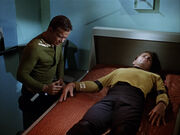
On stardate 1672.1, in 2266 , a strange ore altered the function of the transporter, causing a transporter accident in which Captain James T. Kirk was split into two separate entities. One man embodied all of Kirk's so-called "positive" qualities and the other embodied all of his "evil" qualities.
It was some time before the mishap was discovered, and the malignant version of Kirk roamed the ship, stealing brandy , assaulting crewmen, and even attempting to rape Yeoman Janice Rand . When he was cornered and finally captured in the engine room, the transporter was further damaged by an errant phaser shot he fired. Scott and Spock isolated and repaired the damage.
Their repairs were confirmed when a test animal, which had previously been split in a similar manner to Kirk, was sent through the transporter in an attempt to reintegrate the two creatures. Upon reintegrating, it rematerialized dead, but McCoy speculated that this was the result of the animal not understanding what was happening to it and dying of fright, whereas the sentient and rational Kirk would be able to understand what was being done to him and thus be able to cope with it.
Though he was crippled with indecision, Kirk was able to make the trip (albeit barely), and his two halves were reintegrated once again. ( TOS : " The Enemy Within ")
Split one entity into two identical entities [ ]

Thomas and William Riker
In 2361 , another transporter accident resulted in William T. Riker being divided into two separate Rikers. ( TNG : " Second Chances ") Unlike the two Kirks created in 2266, both Rikers were functionally identical to the original man. ( TOS : " The Enemy Within "; TNG : " Second Chances ")
The incident occurred on Nervala IV , while the USS Potemkin was conducting an evacuation of a science outpost on the planet. At the time, William T. Riker was serving as a lieutenant in Starfleet and was part of an away team . An unusual distortion field meant the Potemkin had difficulty beaming him up. A second confinement beam was initiated to overcome these difficulties, with the intent of reintegrating the two beams in the transporter buffer. This was unnecessary, as only one beam was successful at transporting Riker; the modulation of the distortion caused the second beam to be reflected back down to the surface, materializing the two Rikers, one on the ship, and one on the planet's surface.
The Potemkin left orbit , unknowingly abandoning the duplicate Riker. After eight years, this accident was discovered by the Enterprise -D which revisited the planet, found the second Riker and brought him back to the ship. ( TNG : " Second Chances ")
Twenty years later, in 2381 , history repeated itself when Lieutenant junior grade Brad Boimler , on a convert mission to Karzill IV , found himself duplicated.
While he and his away team were besieged by Pakleds , Boimler used his knowledge of Riker’s splitting, to take down the distortion field keeping them from being beamed back up to the USS Titan . However, the field came back up before Boimler could be beamed up and a second containment field was used to strengthen the beam. This resulted in a clone being created, which was confirmed when the other Boimler returned to the Titan soon after via shuttlecraft.( LD : " Kayshon, His Eyes Open ")
Two entities merged into one (aka "splicing") [ ]
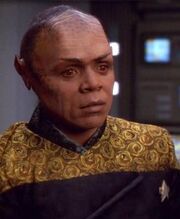
Tuvix a transporter hybrid
In 2263 of the alternate reality , Montgomery Scott chose to beam Leonard McCoy and Spock onto the USS Franklin separately, via the cargo transporters , saying he didn't want to run the risk of splicing them together. McCoy found that prospect distasteful. ( Star Trek Beyond )
Lysosomal enzymes of an alien orchid were the cause of such an accident in 2372 . Tuvok , Neelix , and the orchid were temporarily merged into one being during transport; as the orchid aided microscopic entities in breeding by allowing them to combine with each other, it accidentally caused Tuvok and Neelix to combine when they were broken down into atoms during transport. " Tuvix ", as he named himself (or "themselves"), was a complete mixture of the talents of both crew members.
After discovering how to separate the two patterns and retrieve both Tuvok and Neelix, Tuvix protested that such a procedure would be equivalent to murdering him, but the procedure was undertaken anyway, and Tuvok and Neelix were restored. ( VOY : " Tuvix ")
In 2381 , the same orchid would bring trouble to the Voyager and the USS Cerritos when a petal from the orchid landed on the Voyager' s transporter when Lieutenant Andy Billups and Dr. T'Ana used it, combining themselves into " T'illups ". Looking up Janeway's logs to figure out how to save the two officers, Captain Carol Freeman was horrified to learn of Tuvix's fate and resolved to send T'illups to Starfleet to find an alternative. However, T'illups learned of their fate and vowed to stay alive by forcing the rest of the Cerritos crew to be "Tuvixed".
This plan was accidentally ruined by Ensign D'Vana Tendi and provisional officer T'Lyn when the latter took control of the transporters to send them to the brig , only for all the infected officers to be fused into a barely-sentient mass of flesh, muscle and clothing. Thanks to a modified tricorder, the two officers were able to separate and restore the officers to normal. ( LD : " Twovix ")
Unintended destinations [ ]
Incorrect coordinates [ ].

Kirk and Spock floating briefly in mid-air
In the 2270s , the programming of the Enterprise 's transporter by Ari bn Bem caused Kirk and Spock to re-materialize just next to a cliff overlooking a water party, the rest materializing safely on the cliff. Once materialized, the captain and first officer proceeded to fall into the water. ( TAS : " Bem ")
Mirror universe [ ]
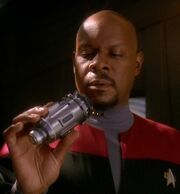
The multidimensional transporter device
In 2267 , an ion storm near the Halkan homeworld resulted in a power surge in the USS Enterprise 's transporter, causing momentary interdimensional contact with a parallel universe . Captain Kirk, Doctor McCoy , Commander Scott , and Lieutenant Uhura , who were beaming up to the Enterprise at the time, materialized in the other universe , transposing with their counterparts from that universe, who experienced an identical accident at the same time. Later, after reviewing the events which led up to the accident, the Enterprise crew members were able to recreate the power surge using energy tapped from the ship's engines , and return to their own universe. ( TOS : " Mirror, Mirror ")
According to Intendant Kira , all transporters in the parallel universe were subsequently redesigned in order to prevent a recurrence of such an event. Despite this, Terran rebels in that universe were able to develop a multidimensional transporter device capable of reconfiguring transporters for use in beaming from one universe to the other. ( DS9 : " Crossover ", " Through the Looking Glass ", " Resurrection ")
Time travel [ ]
In 2371 , Benjamin Sisko , Julian Bashir , and Jadzia Dax were accidentally transported to the year 2024 when the chronitons generated by the Defiant' s cloaking device were contaminated and enhanced by an explosion in a microscopic singularity , while it was passing through the solar system at the time of the beam-out.
Fortunately, Miles O'Brien was able to devise a way to use the residual chronitons to send Kira Nerys and himself to different periods of Earth 's history to try and find out where the away team was sent, and then bring them back home.
However, while in the 21st century , Sisko accidentally caused the death of Gabriel Bell , forcing him to assume the identity of this historical figure. ( DS9 : " Past Tense, Part I ") As a result, Sisko is actually in all the historical photos of Bell. ( DS9 : " Little Green Men ")

IMAGES
VIDEO
COMMENTS
Defiant-class transporter room. The transporter was a type of teleportation machine, or simply teleporter.It was a subspace device capable of almost instantaneously transporting an object from one location to another, by using matter-energy conversion to transform matter into energy, then beam it to or from a chamber, where it was reconverted back or materialize into its original pattern.
A transporter is a fictional teleportation machine used in the Star Trek science fiction franchise. Transporters allow for teleportation by converting a person or object into an energy pattern (a process called "dematerialization"), then sending ("beaming") it to a target location or else returning it to the transporter, where it is reconverted into matter ("rematerialization").
The transporter room was part of a starship or space station which was specially outfitted to transport lifeforms and small, inanimate objects. This room included a transporter chamber with a transporter platform. The number of transporter rooms varied per ship or station, the main criteria being the ability to evacuate all personnel within a specified time. All key components which were ...
A possible explanation for this is put forward in the Star Trek: Deep Space Nine Technical Manual, where such site-to-site transports would probably use twice as much energy as would be required for transport to or from the transporter room itself, since the subject would have to be beamed to the transporter, stored, then shunted to their ...
The transporter is a device, first seen aboard the Starship Enterprise in the Star Trek original series, which made the concept of teleportation familiar to a wide audience. "Beam me up, Scotty" became one of the small screen's most oft-repeated lines (though trivia hunters will find that "Beam me up, Mr. Scott" is the closest the show actually came to that immortal line).
Transporters are basically teleport machines, but work in a very strange way of converting matter to an energy stream and reassembling it. At least its consi...
Teleportation was a term for traveling from one location to another almost instantaneously. Numerous advanced cultures had this capability through the use of transporter technology. A device facilitating teleportation might be known as a teleporter. To Henry Starling of 20th century Earth, teleportation was synonymous with transporter technology, and he labeled USS Voyager's transporter a ...
In the 2009 movie Star Trek, Captain Kirk and Sulu plummeted down toward the planet Vulcan without a parachute. "Beam us up, beam us up!". Kirk shouted in desperation. Then at the last second ...
The biggest problem with achieving teleportation is largely down to how advanced and complex most organisms and objects are. Star Trek transporter tech works by breaking down matter such as living ...
A Converted Transporter Room. This is us in the Transporter Room. It had been converted to the U.S.S. Hiawatha's Transporter Room, and so it had all sorts of weathered paint and frost courtesy Alex Kurtzman's vision for Episode, "Brother." So, I wondered how easily it would be to convert it back to normal for my episode. Production Designer ...
In the very first episode of Star Trek ever produced, The Cage, we saw the crew of the Starship Enterprise beam down to a strange new world, and ever since, ...
In Star Trek: Enterprise Season 4, the inventor of the transporter, Dr. Emory Erickson visits the ship for an experiment that's a secret plan to save his son, lost in a transporter accident ...
The short answer is that ALL teleports go through the transporter room. It's the machine that does the work. So, when you stand on the pad, your molecular signature is transported from the pad to the location of your engineer's choosing. (you thought you were in charge, that's adorable) If you are teleported from a remote location to another ...
Creators of Star Trek haven't confirmed transporters kill you. However, based solely on the science, transporters do kill you. These teleportation devices take scans of the molecules in your body, store them in the pattern buffer, convert them into energy, and then beam them to the desired location. Let's take a look at the science behind ...
The Transporter Room (Cat. No 22803), an elusive UK exclusive. This accessory was sold by the Bradgate Division of Palitoy in the UK, and took the place of the Enterprise Playset in Great Britain. The name "Mego" appears nowhere on the packaging; the only evidence which betrays its state-side origins is the imprint of "© MEGO 1975" on ...
Inspired by the iconic "Mirror, Mirror" episode of Star Trek, this buildable Transporter Room features six platforms, a computer console, interchangeable glow-in-the-dark wall panels, and hinged sections that open up to display up to six figures. The set comes with three highly detailed, super-poseable micro action figures, including ...
The subspace transporter was a type of transporter technology that used subspace instead of normal space to transport matter. (TNG: "Bloodlines") In the 24th century, a normal Federation transporter system, that sent its signal through normal space, was limited to a range of about forty thousand kilometers. The range of a subspace transporter was several light years. The matter that was ...
In the recent Star Trek: Discovery episode "Despite Yourself" S1 Ep10 there was a quick transporter scene that I thought had a really great transporter trans...
A transporter duplicate or transporter clone resulted when a transporter accident created two copies of the same person or object. Refraction or reflection of the transporter beam was usually to blame for such duplication. The duplication process could sometimes result in two incomplete copies, with partial aspects of the original, but could also be complete copies of the original, not only ...
Shanks shot a previous episode where he created the teleport effect using long exposure and light painting techniques, putting people in chairs and slowly adding Christmas lights frame by frame ...
Star Trek's transporter sold the idea of teleportation to the masses, but now German scientists have invented a real-life working system that 'teleports' objects from one location to another ...
Transporter malfunction. A man beaming in without his legs thanks to a transporter accident. A transporter accident or transporter malfunction was an often unintentional occurrence caused by the malfunctioning of a transporter, however, some transporter accidents came as a result of intentional causes, such as murder or assassination.. As with all technology, along with the unknown risks ...